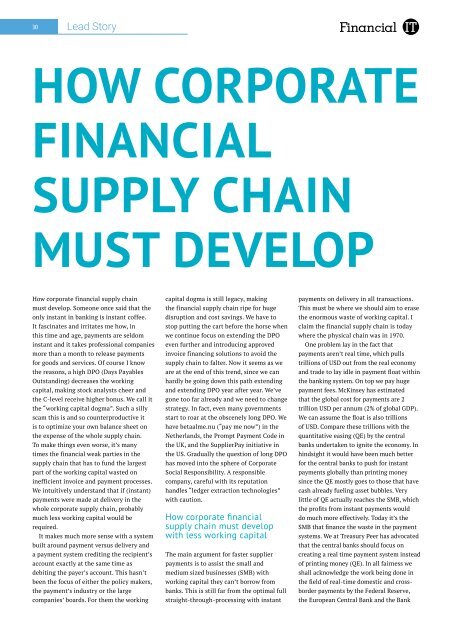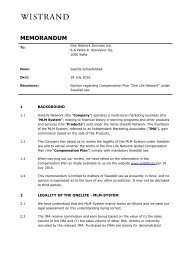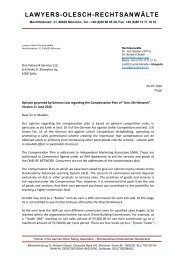Revolutionizing the Financial Markets
With more than 100 000 subscribers of which 70% are banks, Financial IT is focused on publishing news about the leading financial technologies in the world, including the blockchain technology and cryptocurrencies. The February issue of the magazine dedicates its cover to the Founder and CEO of OneCoin, Dr. Ruja Ignatova, and with a 2 pages article sharing OneCoin's story & vision to the world. As Financial IT continies to follow the developments in the company, we are pleased to be recognized as one of the major cryptocurrencies and a key player that shapes the future of payments.
With more than 100 000 subscribers of which 70% are banks, Financial IT is focused on publishing news about the leading financial technologies in the world, including the blockchain technology and cryptocurrencies.
The February issue of the magazine dedicates its cover to the Founder and CEO of OneCoin, Dr. Ruja Ignatova, and with a 2 pages article sharing OneCoin's story & vision to the world. As Financial IT continies to follow the developments in the company, we are pleased to be recognized as one of the major cryptocurrencies and a key player that shapes the future of payments.
Create successful ePaper yourself
Turn your PDF publications into a flip-book with our unique Google optimized e-Paper software.
30<br />
Lead Story<br />
HOW CORPORATE<br />
FINANCIAL<br />
SUPPLY CHAIN<br />
MUST DEVELOP<br />
How corporate financial supply chain<br />
must develop. Someone once said that <strong>the</strong><br />
only instant in banking is instant coffee.<br />
It fascinates and irritates me how, in<br />
this time and age, payments are seldom<br />
instant and it takes professional companies<br />
more than a month to release payments<br />
for goods and services. Of course I know<br />
<strong>the</strong> reasons, a high DPO (Days Payables<br />
Outstanding) decreases <strong>the</strong> working<br />
capital, making stock analysts cheer and<br />
<strong>the</strong> C-level receive higher bonus. We call it<br />
<strong>the</strong> “working capital dogma”. Such a silly<br />
scam this is and so counterproductive it<br />
is to optimize your own balance sheet on<br />
<strong>the</strong> expense of <strong>the</strong> whole supply chain.<br />
To make things even worse, it’s many<br />
times <strong>the</strong> financial weak parties in <strong>the</strong><br />
supply chain that has to fund <strong>the</strong> largest<br />
part of <strong>the</strong> working capital wasted on<br />
inefficient invoice and payment processes.<br />
We intuitively understand that if (instant)<br />
payments were made at delivery in <strong>the</strong><br />
whole corporate supply chain, probably<br />
much less working capital would be<br />
required.<br />
It makes much more sense with a system<br />
built around payment versus delivery and<br />
a payment system crediting <strong>the</strong> recipient’s<br />
account exactly at <strong>the</strong> same time as<br />
debiting <strong>the</strong> payer’s account. This hasn’t<br />
been <strong>the</strong> focus of ei<strong>the</strong>r <strong>the</strong> policy makers,<br />
<strong>the</strong> payment’s industry or <strong>the</strong> large<br />
companies’ boards. For <strong>the</strong>m <strong>the</strong> working<br />
capital dogma is still legacy, making<br />
<strong>the</strong> financial supply chain ripe for huge<br />
disruption and cost savings. We have to<br />
stop putting <strong>the</strong> cart before <strong>the</strong> horse when<br />
we continue focus on extending <strong>the</strong> DPO<br />
even fur<strong>the</strong>r and introducing approved<br />
invoice financing solutions to avoid <strong>the</strong><br />
supply chain to falter. Now it seems as we<br />
are at <strong>the</strong> end of this trend, since we can<br />
hardly be going down this path extending<br />
and extending DPO year after year. We’ve<br />
gone too far already and we need to change<br />
strategy. In fact, even many governments<br />
start to roar at <strong>the</strong> obscenely long DPO. We<br />
have betaalme.nu (“pay me now”) in <strong>the</strong><br />
Ne<strong>the</strong>rlands, <strong>the</strong> Prompt Payment Code in<br />
<strong>the</strong> UK, and <strong>the</strong> SupplierPay initiative in<br />
<strong>the</strong> US. Gradually <strong>the</strong> question of long DPO<br />
has moved into <strong>the</strong> sphere of Corporate<br />
Social Responsibility. A responsible<br />
company, careful with its reputation<br />
handles “ledger extraction technologies”<br />
with caution.<br />
How corporate financial<br />
supply chain must develop<br />
with less working capital<br />
The main argument for faster supplier<br />
payments is to assist <strong>the</strong> small and<br />
medium sized businesses (SMB) with<br />
working capital <strong>the</strong>y can’t borrow from<br />
banks. This is still far from <strong>the</strong> optimal full<br />
straight-through-processing with instant<br />
payments on delivery in all transactions.<br />
This must be where we should aim to erase<br />
<strong>the</strong> enormous waste of working capital. I<br />
claim <strong>the</strong> financial supply chain is today<br />
where <strong>the</strong> physical chain was in 1970.<br />
One problem lay in <strong>the</strong> fact that<br />
payments aren’t real time, which pulls<br />
trillions of USD out from <strong>the</strong> real economy<br />
and trade to lay idle in payment float within<br />
<strong>the</strong> banking system. On top we pay huge<br />
payment fees. McKinsey has estimated<br />
that <strong>the</strong> global cost for payments are 2<br />
trillion USD per annum (2% of global GDP).<br />
We can assume <strong>the</strong> float is also trillions<br />
of USD. Compare <strong>the</strong>se trillions with <strong>the</strong><br />
quantitative easing (QE) by <strong>the</strong> central<br />
banks undertaken to ignite <strong>the</strong> economy. In<br />
hindsight it would have been much better<br />
for <strong>the</strong> central banks to push for instant<br />
payments globally than printing money<br />
since <strong>the</strong> QE mostly goes to those that have<br />
cash already fueling asset bubbles. Very<br />
little of QE actually reaches <strong>the</strong> SMB, which<br />
<strong>the</strong> profits from instant payments would<br />
do much more effectively. Today it’s <strong>the</strong><br />
SMB that finance <strong>the</strong> waste in <strong>the</strong> payment<br />
systems. We at Treasury Peer has advocated<br />
that <strong>the</strong> central banks should focus on<br />
creating a real time payment system instead<br />
of printing money (QE). In all fairness we<br />
shall acknowledge <strong>the</strong> work being done in<br />
<strong>the</strong> field of real-time domestic and crossborder<br />
payments by <strong>the</strong> Federal Reserve,<br />
<strong>the</strong> European Central Bank and <strong>the</strong> Bank





